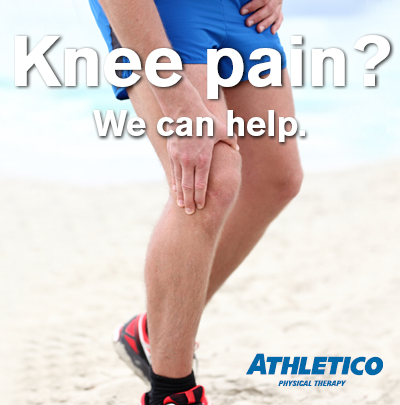
Do knee braces or sleeves work for knee osteoarthritis?
1 CommentKnee osteoarthritis (breakdown of articular cartilage along the joint surfaces) is rampant in the aging population. Some statistics show nearly 1 in 2 people may develop symptomatic knee osteoarthritis by age 85 years (1). These are odds are not good!
Unfortunately, your articular cartilage cannot be repair itself after it breaks down. Nevertheless, you CAN improve and manage your symptoms with simple remedies prescribed by your physician and/or physical therapist.
One question I hear often from my patients is “Do you think I should get a knee brace/sleeve?”
Often patients expect one or more the following results from wearing a knee brace or sleeve:
However, are these expectations valid?
Unfortunately, the answer is not clear. The general consensus among medical professionals is that there is low quality evidence for knee braces/sleeves for osteoarthritis (2,3). This means there is a very little chance that knee braces/sleeves can consistently help people with knee osteoarthritis. Some patients may “feel” better and have more confidence with a knee brace/sleeve. However, research shows that braces or sleeves ALONE do not consistently improve your total function and ability to move.
Please consider this though: if you have severe knee weakness and instability due to your knee osteoarthritis, a knee brace may help in these situations to provide more stability to your knee (3). This may include knee symptoms such as severe pain, “giving way”, buckling, or shifting of the knee. However, if you are having these symptoms, please consult your physician and/or physical therapist to help you determine if you would be a candidate for a knee brace.
The BEST evidence-based interventions to help with your knee pain are regular exercise and – if applicable – weight loss (2,4). These two interventions consistently result less pain in your knee and improved physical function.
These instructions come with a disclaimer though. Low to moderate intensity exercise activities, such as biking, walking, elliptical, stretching, swimming, other aquatic training and light weight training, are the best for keeping your symptoms low while maximizing your function (5,6). Impact activities that require jumping, twisting and turning may NOT be the best for improving your knee symptoms and/or function since these activities increase stress and pressure along the knee joint that can be harmful (6).
As always, if you have knee pain and have yet to seek medical treatment, consult your physician and/or physical therapist to help determine a plan that is appropriate for you to maximize your function and keep you moving with less pain!
1. Murphy L, Schwartz TA, Helmick CG, Renner JB, Tudor G, et al. Lifetime risk of symptomatic knee osteoarthritis. Arthritis Rheum 2008;59(9):1207–1213 doi: 10.1002/art.24021. PubMed PMID: 18759314
2. Jamtvedt, Gro, et al. Physical therapy interventions for patients with osteoarthritis of the knee: an overview of systematic reviews. Physical therapy (2007).
3. R.W. Brouwer, T.S.C. Jakma, A.P. Verhagen, J.A.N. Verhaar, S.M.A. Bierma-Zeinstra. Braces and orthoses for treating osteoarthritis of the knee. Cochrane Database Syst Rev (1) (2005)
4. Zhang, W., et al. OARSI recommendations for the management of hip and knee osteoarthritis, part I: critical appraisal of existing treatment guidelines and systematic review of current research evidence. Osteoarthritis and Cartilage 15.9 (2007): 981-1000.
5. Waller, Benjamin, et al. Effect of therapeutic aquatic exercise on symptoms and function associated with lower limb osteoarthritis: a systematic review with meta-analysis. Physical therapy (2014).
6. Bennell, Kim L., and Rana S. Hinman. A review of the clinical evidence for exercise in osteoarthritis of the hip and knee. Journal of Science and Medicine in Sport 14.1 (2011): 4-9.


1 Comment
Zach Cole
It’s great to know that using a knee brace will help improve the stability in your knee. My wife is struggling with knee problems right now and I am wondering how I can help her relieve some of her pain. I’ll be sure to tell her that a knee brace can help with her knee pain.